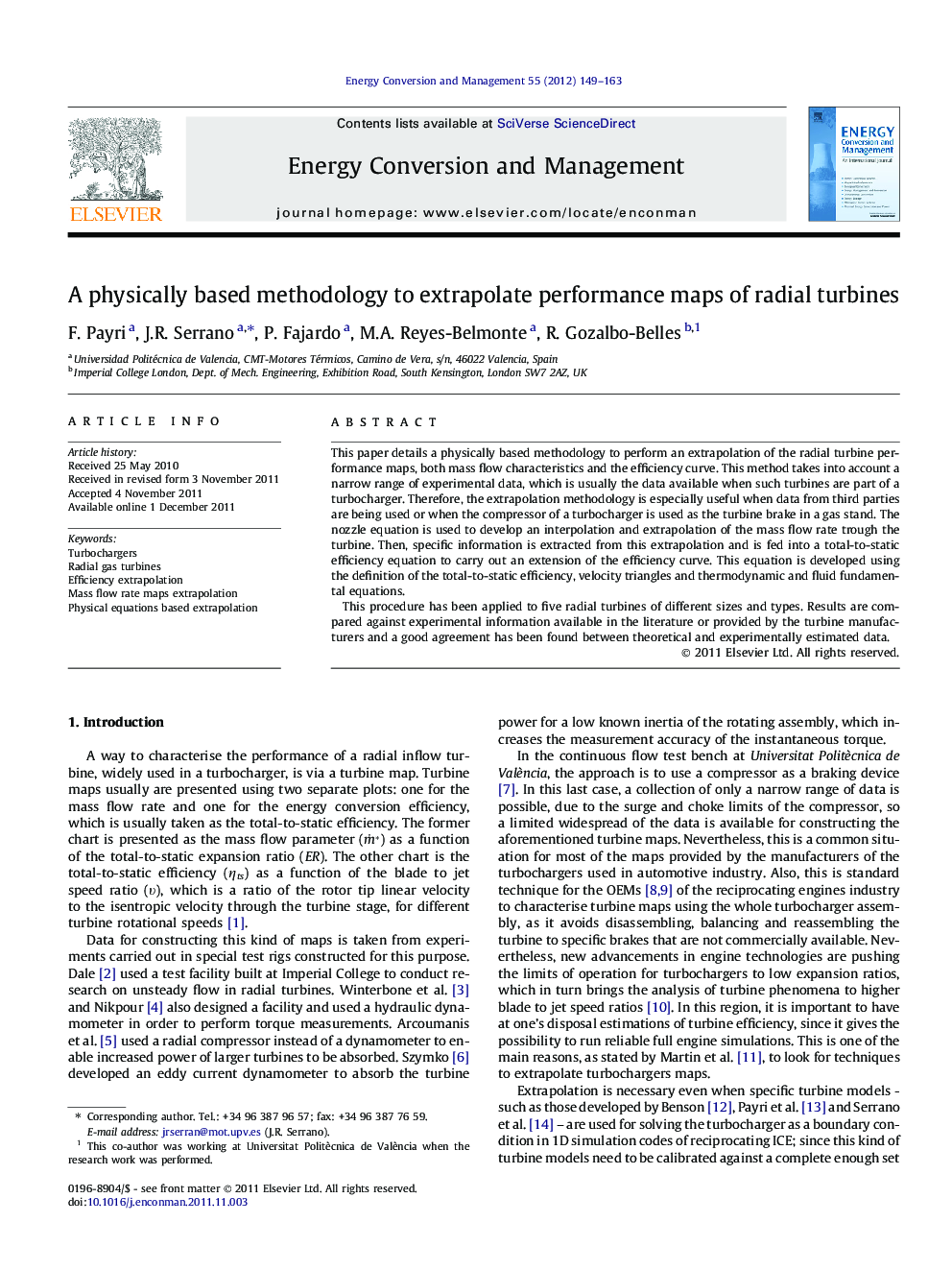| Article ID | Journal | Published Year | Pages | File Type |
|---|---|---|---|---|
| 764430 | Energy Conversion and Management | 2012 | 15 Pages |
This paper details a physically based methodology to perform an extrapolation of the radial turbine performance maps, both mass flow characteristics and the efficiency curve. This method takes into account a narrow range of experimental data, which is usually the data available when such turbines are part of a turbocharger. Therefore, the extrapolation methodology is especially useful when data from third parties are being used or when the compressor of a turbocharger is used as the turbine brake in a gas stand. The nozzle equation is used to develop an interpolation and extrapolation of the mass flow rate trough the turbine. Then, specific information is extracted from this extrapolation and is fed into a total-to-static efficiency equation to carry out an extension of the efficiency curve. This equation is developed using the definition of the total-to-static efficiency, velocity triangles and thermodynamic and fluid fundamental equations.This procedure has been applied to five radial turbines of different sizes and types. Results are compared against experimental information available in the literature or provided by the turbine manufacturers and a good agreement has been found between theoretical and experimentally estimated data.
► Physical based methodology to extrapolate radial turbine efficiency measured data. ► Equation relating efficiency versus blade to speed ratio (υ) have been developed. ► Developed efficiency equation takes into account turbine mass flow parameter. ► Efficiency versus υ at constant pressure ratio is discussed, also at constant speed. ► The methodology has been validated with a broad range of experimental results.
